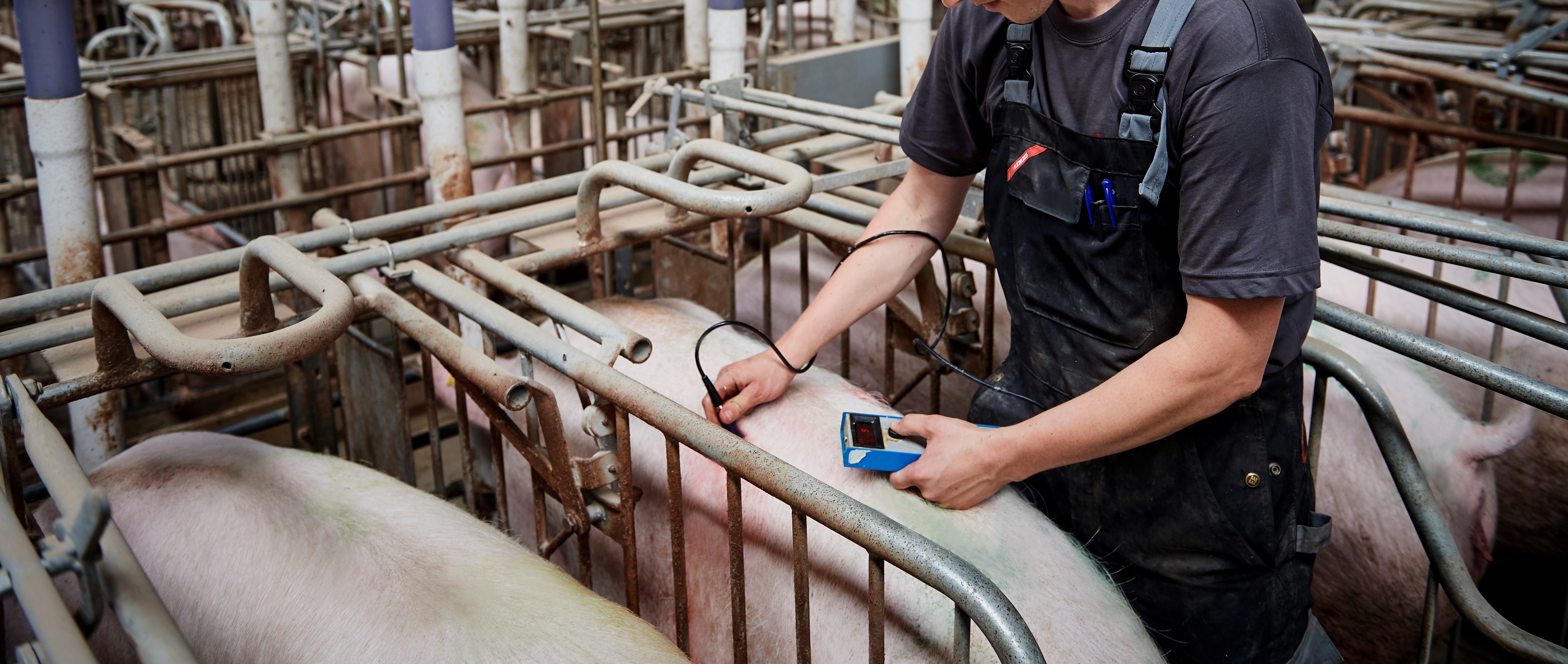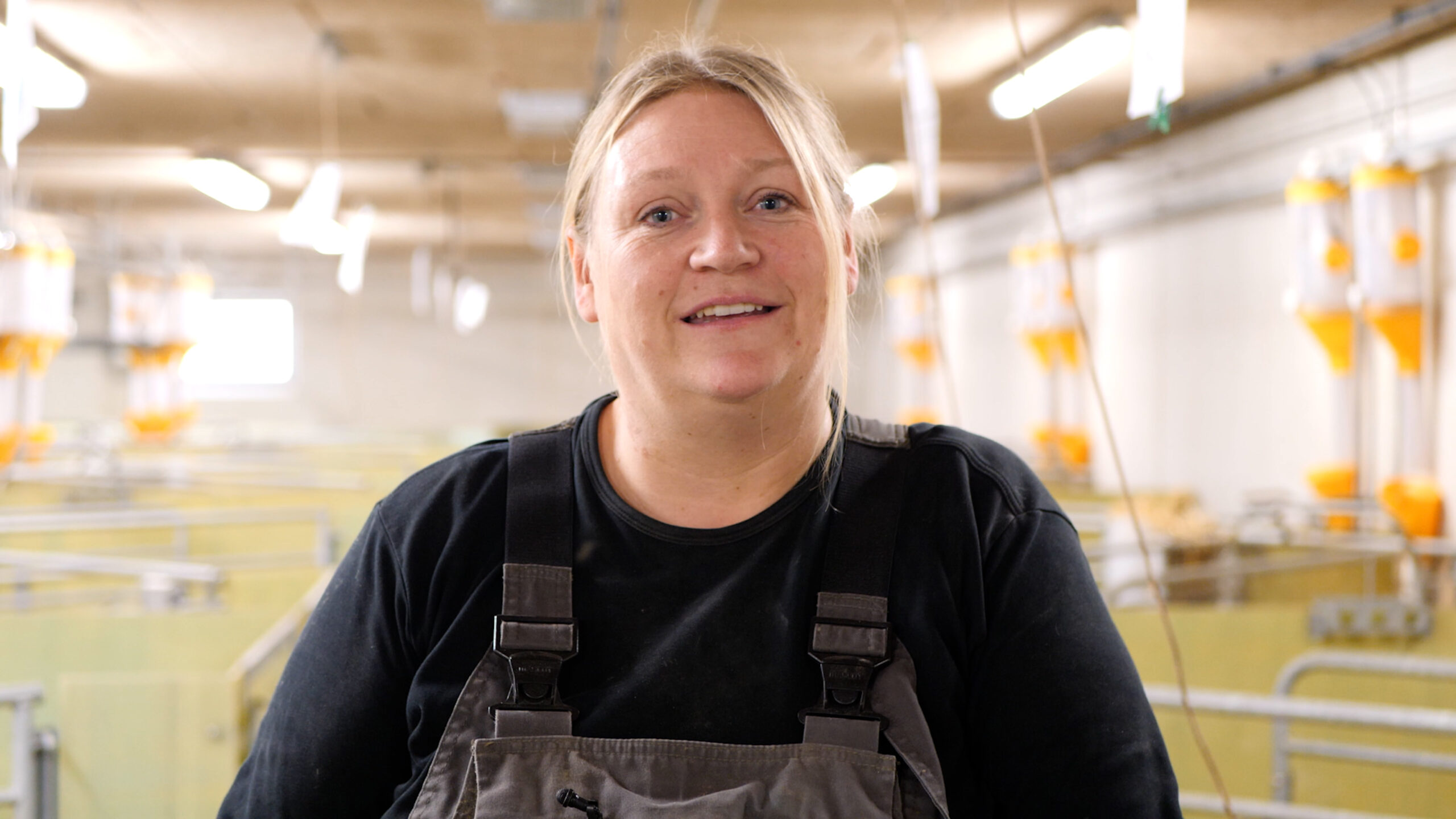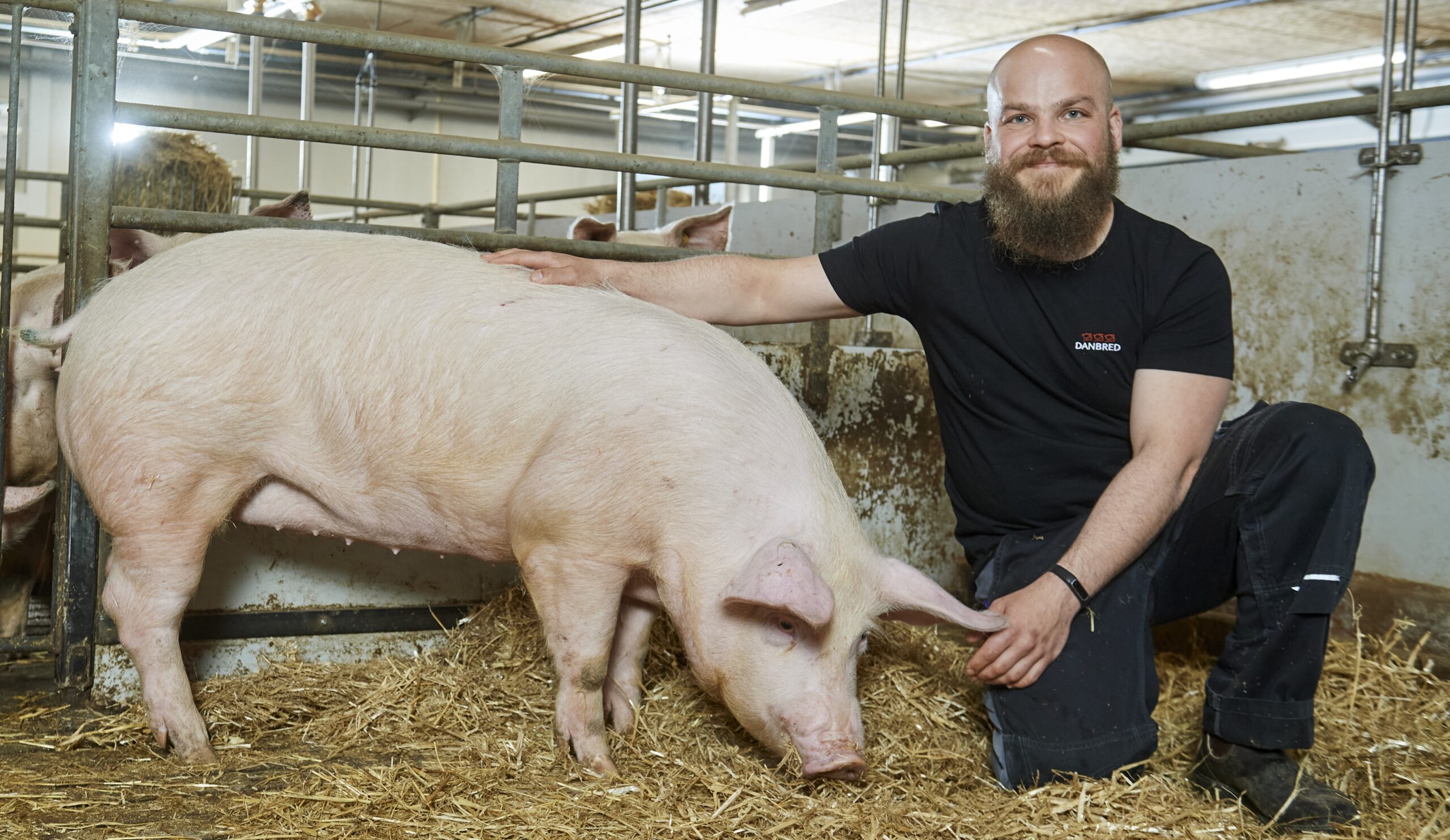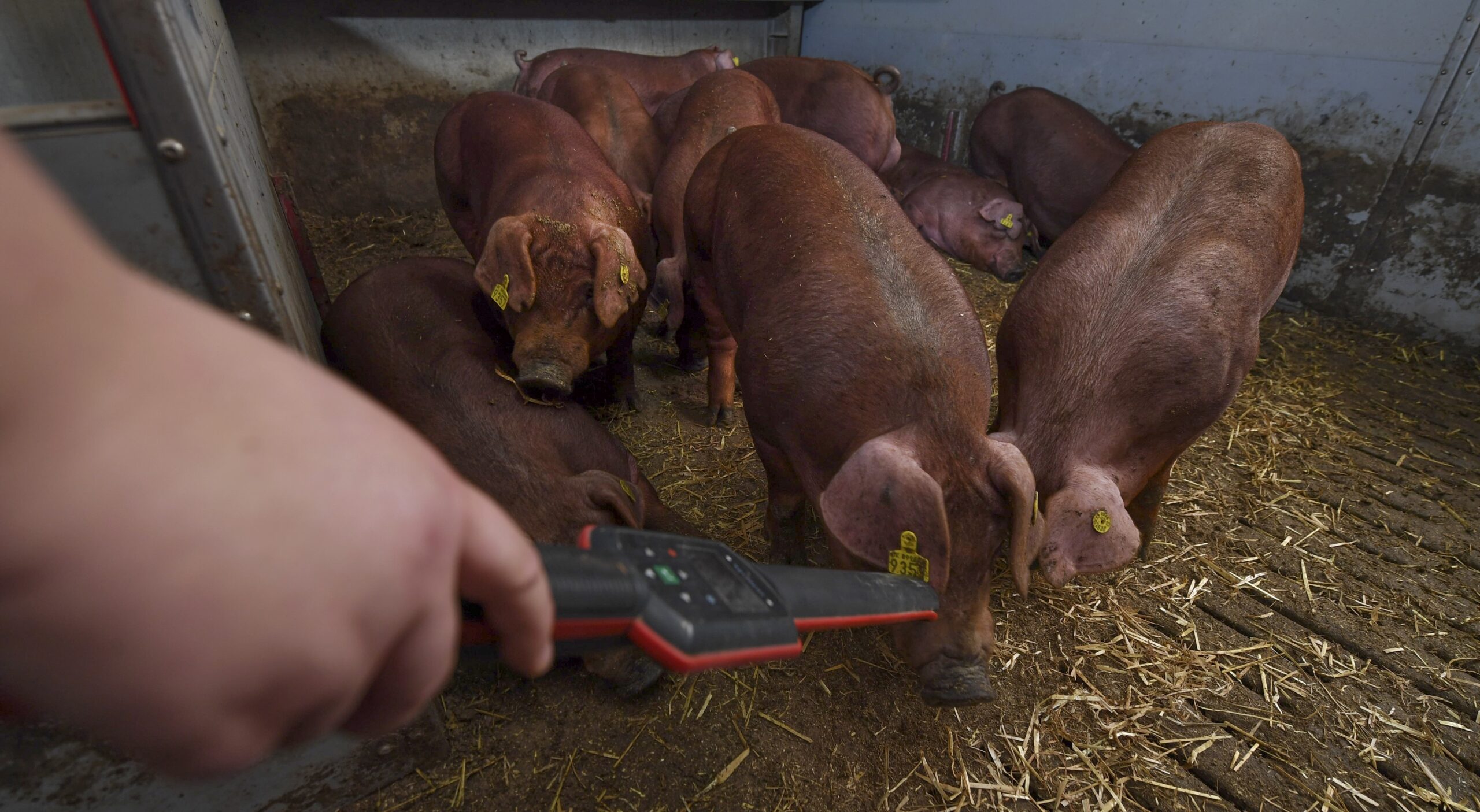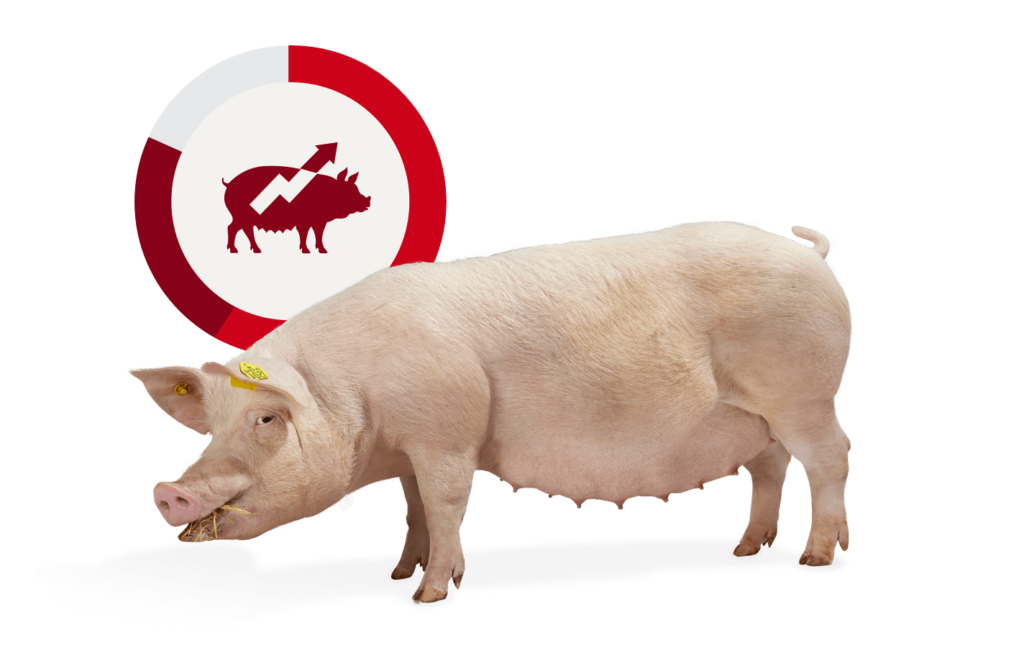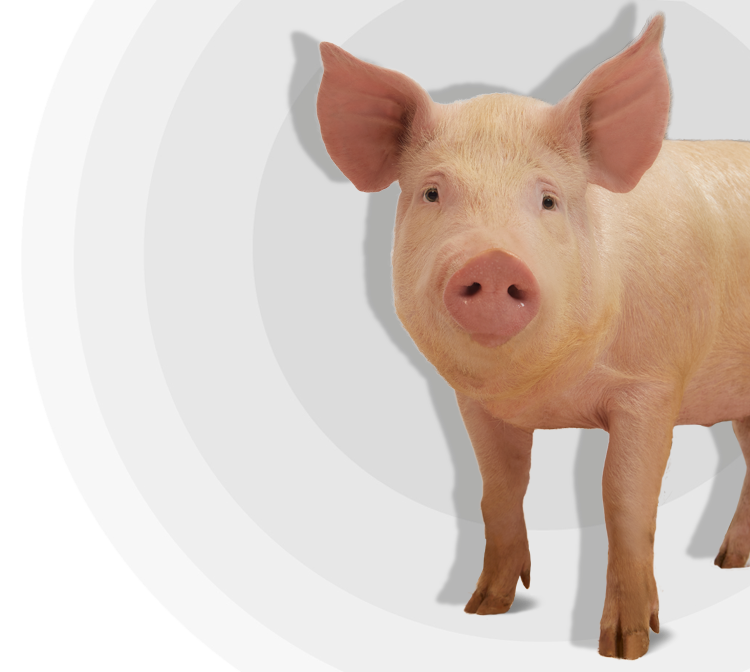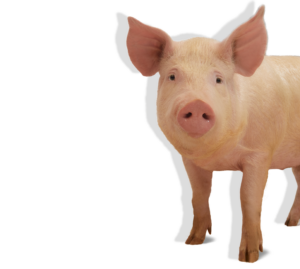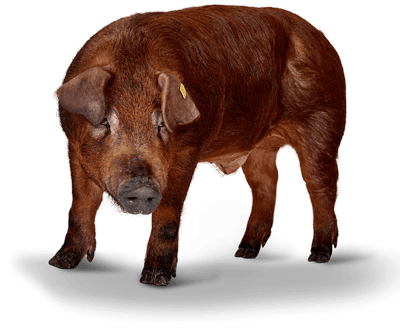By Thomas Sønderby Bruun
Senior Specialist, SEGES Danish Pig Research Centre
Abstract
Feeding the rearing gilt is the key to longevity and prolificacy. DanBred Hybrid gilts should have at least 12 mm of backfat and a weight of 140–155 kg at first service. Feeding the rearing gilts according to the recommended feeding curve and with diets containing moderate levels of SID crude protein and SID lysine provides an opportunity to inseminate gilts in their second heat at an age of 230–250 days. To maximize litter size, flushing, i.e. minimum 3.4 kg of feed/day, should be initiated at 5–7 days prior to expected service in second heat. After first service the feed allowance should be decreased to 2.2–2.4 kg/day for around 28 days to increase survival of foetuses.
Danish feeding standards during the gilt rearing period
The Danish feeding standards are expressed as g SID amino acids per Feed Unit for pigs or sows (FUpig and FUsow), but because the Danish feed evaluation system is not used world-wide, certain modifications are made to express the feeding standards on a kilogram basis as shown in Table 1. The feeding standards aim to control the average daily gain, and thus, storage of lean meat.
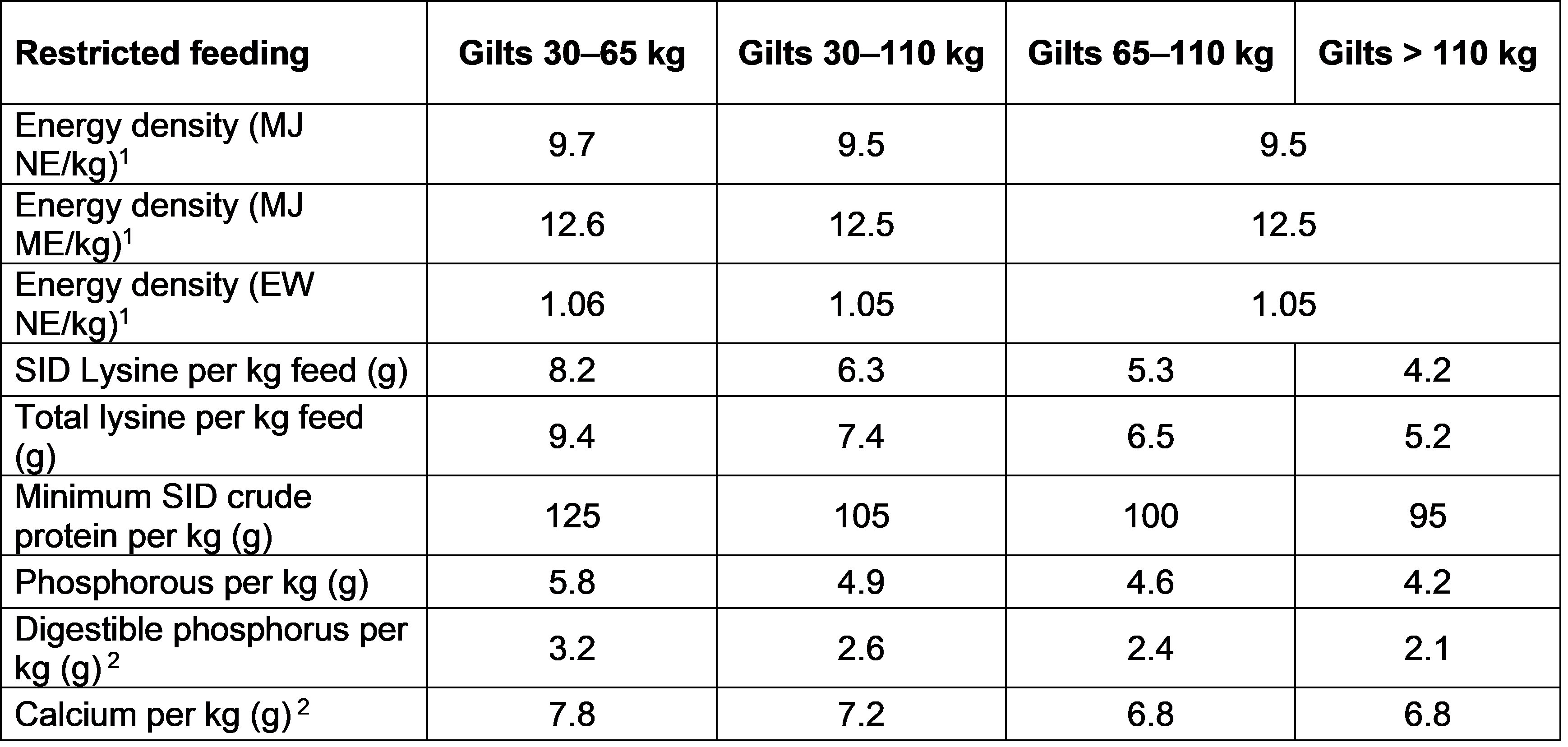
Table 1. Danish feeding standards for DanBred Hybrid gilts during the rearing period.
Danish feeding standards should be combined with the recommended feeding curve
Using the recommended feeding curve (Table 2) from 30 kg (from an age of approximately 80 days) and until initiation of flushing concomitantly with the recommended feeding standards (Table 1) will ensure an optimal growth rate and a back fat thickness at first service of at least 12 mm.
Table 2. Recommended feeding curve (in FUpig and kg per day) for DanBred Hybrid gilts from 30 kg and until initiation of flushing1 period 5–7 days prior to first service.

1 Flushing with at least 3.4 kg of feed 5–7 days prior to first service should be used to optimize litter size.
2 A diet with 6.3 g SID lysine per kg is used in the entire rearing period.
3 A diet with 6.3 g SID lysine per FUpig is used until day 98, and subsequent lysine is decreased to reach 4.2 g SID lysine per FUpig in order to decrease growth rate and to favorize storage of backfat.
Ad libitum feeding is not recommended due to the risk of too high growth rate. Furthermore, a recent trial (Klaaborg et al. 2019) conducted with DanBred Hybrid gilts showed, that increasing the feed allowance by approximately 10% (close to ad libitum feeding) above the recommended curve (Table 2) resulted in a 0.9 mm higher backfat thickness at first service (P<0.01), but did not affect number of total born piglets in first parity (P=0.30), average daily gain of the litter (P=0.89) or number of weaned piglets per litter (P=0.94). These results are in line with results from Thingnes et al. (2015) and reveals that feeding above our recommended feeding curve was not beneficial for sow productivity, only for back fat thickness.
The use of phase-feeding (as shown in Table 2) is efficient to decrease the backfat thickness at first service. Furthermore, the use of a feeding strategy with a lysine content of 6.3 g SID per kg feed until around 100–110 kg and subsequent 4.2 g SID lysine per kg feed will decrease the lean meat gain and favorize storage of backfat. We always recommend having reliable measurements of backfat (measured in P2 at the last rib, 7 cm vertically from backbone), the to avoid gilts serviced at a low level of backfat (< 12 mm).
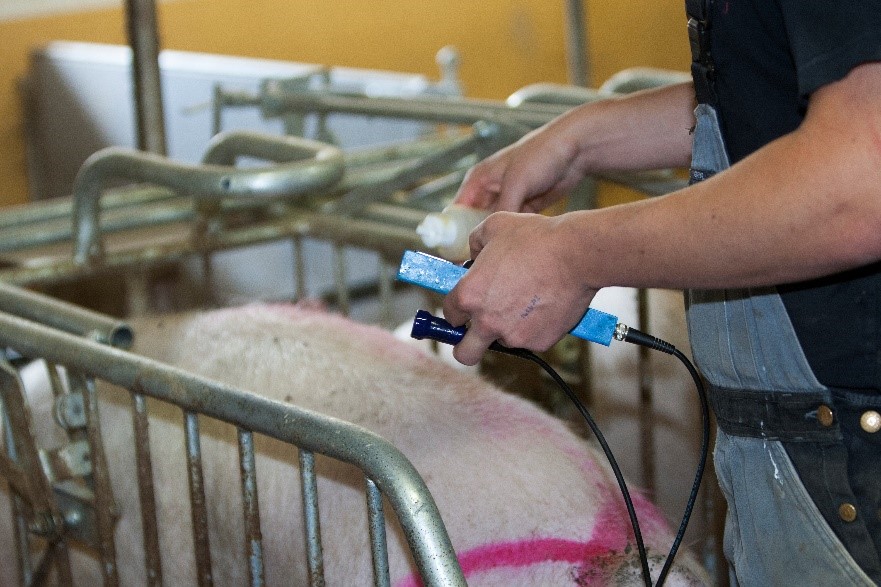
Measurement of backfat is an objective measurement of body condition. At first service backfat should be 12 mm or higher.
Longevity of young sows
Sows do typically not become profitable until their second to third parity. Therefore, focus should be kept on culling reasons of young sows. Young sows are often culled due to feet and leg problems which is related to growth rate and age at first service (Jørgensen & Sørensen 1998; Trottier & Johnston 2001; Engblom et al. 2008). Therefore, controlling growth rate during the rearing period and age at first service is crucial (Engblom et al. 2008; Koketsu et al. 1999). Aim for an age of 230–250 days at first service (in second heat) and a weight of 140–155 kg in order to ensure sow longevity.
Feeding strategy and particle size in feed affects stomach health
The use of pelleted feed compared with meal feed increases the prevalence of gastric ulcers (Jørgensen og Jensen 2004). Therefore, pelleted feed should be used with precausions to ensure stomach health and thereby optimize sow longevity. Addition of 10–15 % non-heat treated rollermilled barley in the pelleted feed has shown to reduce the risk of gastric ulcers numerically (Sørensen 2009), and this is commonly used on sow farms in Denmark. Using meal feed resulted in a 4-fold reduction in prevalence of gastric ulcers and scars (Jørgensen & Haugegaard 2014). The particle size is of great importance for stomach health. If more than 50–60 % of the feed has a particle size below 1 mm, this may increase the prevalence of gastric ulcers. The feeding strategy also affects stomach health. A Danish study (Jørgensen & Haugegaard 2014) conducted with growing pigs from 75–110 kg showed, that the proportions of pigs with gastric ulcers and scars were higher (P<0.05) when pigs were fed pelleted feed ad libitum compared with one or two meals per day. Consequently, both feeding strategy and physical properties of feed have major impacts on stomach health.
Implications
In order to ensure a high longevity and a high litter size, DanBred Hybrid gilts should have at least 12 mm of backfat and a weight of 140–155 kg at first service. This is obtained by feeding the rearing gilts according to the recommended feeding curve and with diets containing moderate levels of SID crude protein and SID lysine. First service should take place in the second heat at an age of 230–250 days. Furthermore, keep in mind that flushing (i.e. minimum 3.4 kg of feed/day) should be initiated at 5–7 days prior to expected service in second heat, and that feed allowance should be decreased to 2.2–2.4 kg/day when the gilts are serviced in order to maintain the potential of a high litter size.
References
Bruun, T.S.; Sørensen, G.; Tybirk, P. (2014): Baggrund for næringsstofnormer til polte fra 30 til 140 kg [Background for feeding standards to gilts from 30 to 140 kg]. Notat no. 1418. Link: https://svineproduktion.dk/publikationer/kilder/notater/2014/1418
Engblom, L.; Lundeheim, N.; Strandberg, E.; del P. Schneider, M.; Dalin, A.-M.; Andersson, K. (2008): Factors affecting length of productive life in Swedish commercial sows. Journal of Animal Science. 86: 432-441.
Jørgensen, L.; Haugegaard, S. (2014): Foderstrategi kan påvirke mavesundhed [Feeding strategy can affect stomach health]. Publication no. 1014. Link: https://svineproduktion.dk/Publikationer/Kilder/lu_medd/2014/1014.aspx
Jørgensen, L.; Jensen, B.B. (2004): Melfoder og pelleteret foder til søer. [Meal feed and pelleted feed for sows]. Publication no. 668. Link: https://svineproduktion.dk/publikationer/kilder/lu_medd/2004/668
Jørgensen, B.; Sørensen, M.T. (1998) Different rearing intensities of gilts: II. Effects on subsequent leg weakness and longevity. Livestock Production Science. 54: 167-171.
Klaaborg, J.: Carl, T.N..; Bruun, T. S.; Strathe, A.V.; Bache, J. K.; Kristensen, A.R.; Amdi, C. (2019): The effect of feeding strategy during rearing in a commercial setting on gilt body condition, lactation performance and culling rate in modern sows nursing large litters. Livestock Science. 228: 144-150.
Roongsitthichai, A.; Cheuchuchart, P.; Chatwijitkul, S.; Chantarothai, O.; Tummaruk, P. (2013): Influence of age at first estrus, body weight, and average daily gain of replacement gilts on their subsequent reproductive performance as sows. Livestock Science. 151: 238-245.
Sørensen, G. (2009): Mavesundhed hos søer, der tildeles industrielt foder [Stomach health in sows fed industrially produced feed]. Publication no. 0909. Link: https://svineproduktion.dk/publikationer/kilder/lu_erfa/2009/0909
Thingnes, S. L.; Hallenstvedt, E.; Sandberg, E.; Framstad, T. (2015): The effect of different dietary energy levels during rearing and mid-gestation on gilt performance and culling rate. Livestock Science. 172: 33-42.
Trottier, N. L.; Johnston, L. J. (2001): Feeding gilts during development and sows during gestation and lactation. I: Swine Nutrition (Lewis, A. J. & Southern, L. L. eds.), pp. 725-770. CRC Press LLC, Boca Raton.

